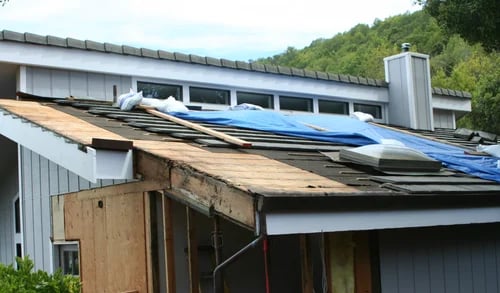Understanding Roof Life Span and Its Impact on Home Insurance Rates
Every person in our society needs a "roof over their head," but how long do they last? What type of options are available for my home? What does a new roof do for my insurance rate? These questions are answered below:
Pangea SUN Solutions
6/11/20243 min read


A roof is one of the most critical components of any home, providing essential protection against the elements. However, like all things, roofs have a life span that varies depending on the material, climate, and maintenance. Understanding the life span of your roof and how it impacts your home insurance rates is crucial for any homeowner. This blog post will delve into the factors that affect roof longevity and how insurance companies assess roof conditions to determine premiums.
The Life Span of Different Roofing Materials
Asphalt Shingles
Life Span: 15-30 years
Description: The most common roofing material, asphalt shingles are cost-effective and relatively easy to install. They come in various grades, with higher-grade options offering longer life spans.
Metal Roofs
Life Span: 40-70 years
Description: Metal roofs are known for their durability and resistance to extreme weather conditions. They require less maintenance and are often made from recyclable materials, making them an environmentally friendly option.
Clay and Concrete Tiles
Life Span: 50-100 years
Description: These materials are incredibly durable and can withstand severe weather, including high winds and hail. They are heavy and may require additional structural support, but their longevity and aesthetic appeal are unmatched.
Wood Shingles and Shakes
Life Span: 20-40 years
Description: Wood shingles offer a natural and rustic look. However, they require regular maintenance and are susceptible to fire and rot unless properly treated.
Slate
Life Span: 75-200 years
Description: Slate roofs are among the most durable and long-lasting options available. They are also one of the most expensive, but their life span justifies the initial investment for many homeowners.
Factors Influencing Roof Longevity
Climate: Extreme weather conditions, such as heavy snow, high winds, and intense heat, can shorten the life span of a roof. For example, asphalt shingles may deteriorate faster in hot climates, while metal roofs perform better in areas prone to heavy snowfall.
Maintenance: Regular inspections and maintenance can significantly extend the life of a roof. Cleaning gutters, replacing damaged shingles, and addressing minor issues promptly can prevent larger, more costly problems.
Installation Quality: A poorly installed roof can lead to leaks and other issues that shorten its life span. It’s crucial to hire experienced and reputable contractors to ensure proper installation.
Ventilation: Proper ventilation helps regulate temperature and moisture levels in the attic, preventing damage to the roof structure and materials.
Impact on Home Insurance Rates
Insurance companies consider the condition and age of your roof when determining your home insurance premiums. Here’s how:
Newer Roofs: Homes with newer roofs typically enjoy lower insurance rates. New roofs are less likely to suffer from leaks or structural issues, reducing the risk for insurers.
Roof Materials: Some roofing materials are more durable and resistant to damage than others. For example, metal roofs may result in lower premiums due to their resilience against hail and wind damage.
Regular Maintenance: Demonstrating regular maintenance and inspections can positively impact your insurance rates. Insurers are more likely to offer favorable terms if they see that you proactively care for your roof.
Roof Age: As a roof approaches the end of its life span, insurance companies may increase premiums or even require a roof replacement to continue coverage. Older roofs are more likely to fail and cause significant damage to the home.
Tips for Managing Roof-Related Insurance Costs
Regular Inspections: Schedule professional roof inspections at least once a year, and after major weather events, to catch and address issues early.
Maintenance: Keep your roof well-maintained by cleaning gutters, replacing damaged shingles, and ensuring proper ventilation.
Upgrade Wisely: If your roof is nearing the end of its life span, consider upgrading to more durable materials that can withstand your local climate.
Document Everything: Keep records of all roof repairs, maintenance, and inspections. This documentation can be useful when negotiating insurance rates or filing claims.
Conclusion
Understanding the life span of your roof and its impact on insurance rates is essential for protecting your home and managing costs. By choosing the right materials, performing regular maintenance, and staying proactive about roof care, you can extend the life of your roof and potentially lower your insurance premiums. Investing in your roof is an investment in the safety and value of your home.
